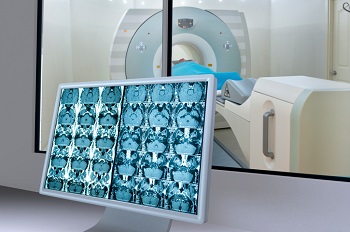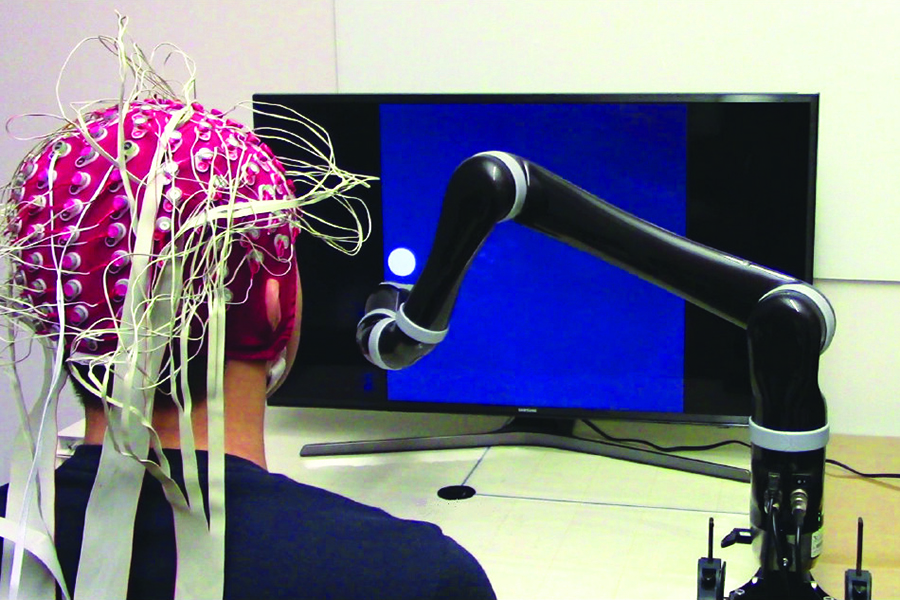Machine learning to the rescue – When you just cannot hold still for an MRI
A magnetic resonance imaging (MRI) brain scan uses the body’s natural magnetic properties and radio waves to produce detailed images of the brain and the brain stem. Since no radiation is used, it is a safer alternative for most than a computed tomography (CT) scan and provides more detailed images of the soft tissue.
While MRIs are a powerful diagnostic tool for medical professionals, they are far from easy for the patients to endure. No, they are not painful. But they do require the patient to lie motionless with their head inserted in a large, somewhat noisy machine for up to an hour.
Imagine holding completely still for 60 minutes
Now imagine keeping a wiggly toddler still for that long.
To be fair, toddlers aren’t the only ones to have trouble holding still for that long. It is difficult for almost anyone to remain completely still for an hour with their head inside an MRI scanner. For people with movement disorders, it can be downright impossible.
The problem with MRIs is that any movement can blur the resulting images, compromising the quality of the data. And MRIs are expensive, costing thousands of dollars for each test.
Knowing exactly how much the patient squirms can help shorten MRI duration
MRI scans are lengthy, largely because the operators need to ensure that they capture enough quality data. But it’s difficult for the operator to determine when they have acquired the needed data. It’s preferable to err on the side of too much data rather than risk the expense and time needed to retest a patient.
Researchers from Washington University School of Medicine and the Oregon Health and Science University developed a suite of software that provides real-time statistics on head movement of patients in the MRI scanner. This lets the MRI scanner operators stop the scan as soon as they have enough low-movement images collected.
The software is called Framewise Integrated Real-time MRI Monitoring (FIRMM), and provides scanner operators with head-motion analytics in real time. The software monitors the patients’ movements, and determines if they are “low movers”, “high movers”, or that even trickier area to differentiate, “medium movers”.
How it works
FIRMM’s components are the compiled MATLAB binary backend, shell scripts for image processing, a Docker image containing image processing software dependencies, and a Django web application front end. The compiled MATLAB binary backend monitors an incoming folder waiting for a new subfolder that has the current date and contains images created within the last few minutes. The backend does shell script image processing only on new functional images.
Image processing converts the echo planar imaging (EPI) to the standard DICOM format since it is standard for most scanner equipment and supports offline analysis. To determine head movement, FIRMM uses a framewise displacement (FD) algorithm. A linear model is developed based on the FD concept which uses machine learning algorithms for predictions.
Machine learning helps cut MRI duration, and therefore costs
The researchers published the results of their study in ScienceDirect, stating, “ Our analyses show that using FIRMM to identify the ideal scan time for each person can reduce total brain MRI scan times and associated costs by 50% or more.”
50% less time to quality data. That means 50% less time in the MRI machine. This is great news for young patients, and, well, anyone that must endure an MRI. And a 50% reduction in cost is appreciated by all as well.
According to Analytics India, “… real-time image data analysis using machine learning plays a crucial role in improving data quality — in addition to reducing high costs incurred in MRIs.”








Comments
To leave a comment, please click here to sign in to your MathWorks Account or create a new one.